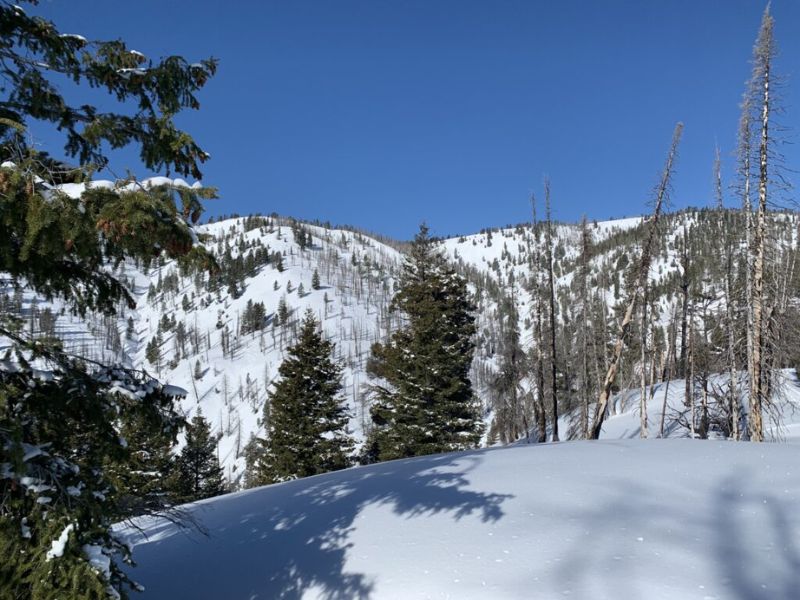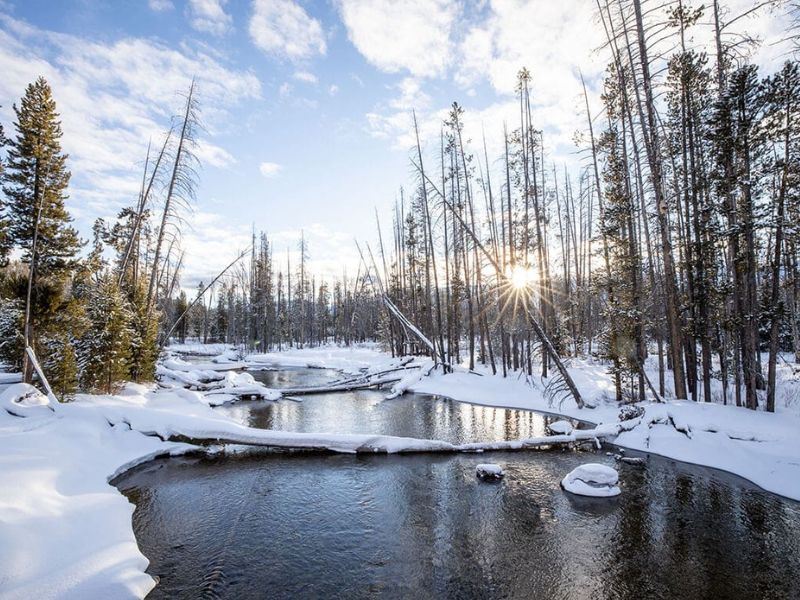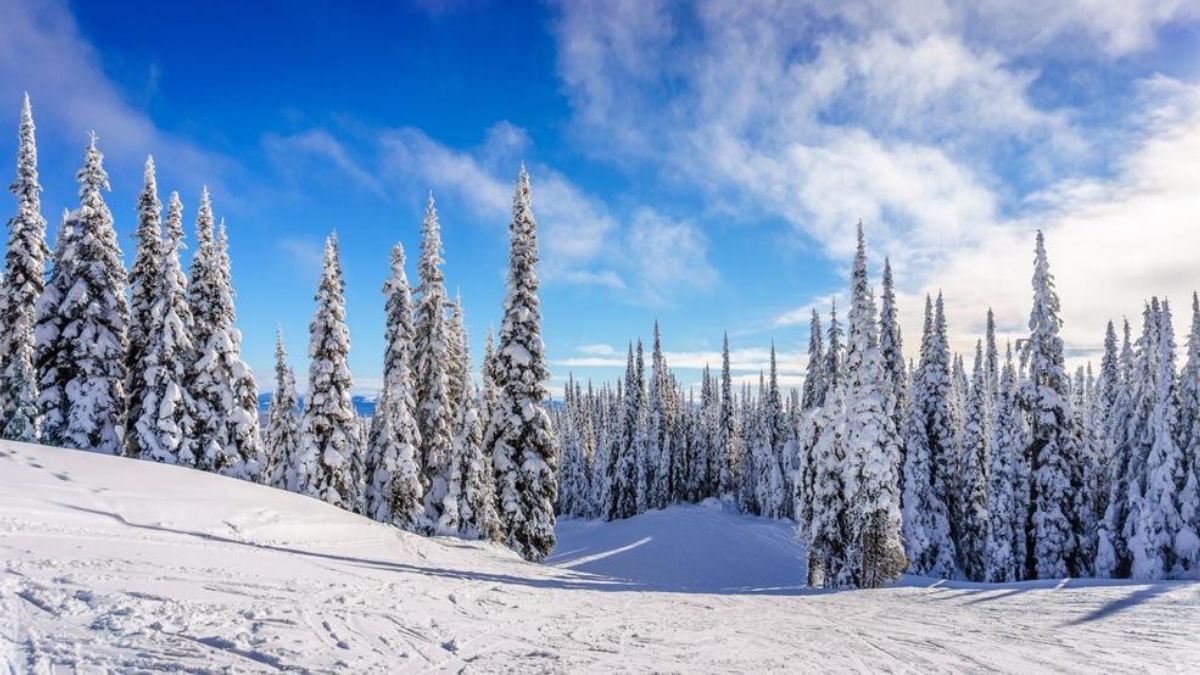Yes, it does snow in Idaho. Idaho experiences snowfall during the winter months, typically from November to March. The amount of snowfall varies across the state due to differences in elevation and geographic features. Regions with higher elevations, such as the northern parts of Idaho, tend to receive more snow compared to lower-lying areas.
The mountainous regions, including the Rocky Mountains and the Bitterroot Range, experience significant snowfall and are popular destinations for winter sports enthusiasts. The northern part of the state receives more snowfall, while areas like Boise in the south experience milder winters with relatively moderate snowfall.
Idaho, a state known for its rugged mountains, vast forests, and stunning landscapes, experiences diverse weather conditions throughout the year. One of the most common questions asked about Idaho’s climate is whether it snows in this region.
In this article, we will explore the snowfall patterns in Idaho, the regions most affected, and the impact of snow on daily life.
Location Overview of Idaho
Idaho, located in the western United States, is a state known for its diverse landscapes and natural beauty. It is bordered by six other states: Montana to the northeast, Wyoming to the east, Utah to the south, Nevada and Oregon to the west, and Washington to the north. The Canadian province of British Columbia also borders Idaho to the north.
Idaho is characterized by a varied topography, which contributes to its scenic beauty and outdoor recreational opportunities. The state can be roughly divided into three geographic regions:
- Northern Idaho
This region is characterized by densely forested areas, rugged mountains, and numerous lakes. The Coeur d’Alene Mountains, the Bitterroot Range, and the Cabinet Mountains are prominent mountain ranges in this area. The northern part of the state is also known for its fertile valleys and extensive farmland.
- Central Idaho
Central Idaho is dominated by the majestic Rocky Mountains and includes some of the state’s most remote and wild areas. The famous Sawtooth Range and the Salmon River Mountains are located here, offering stunning landscapes and excellent opportunities for hiking, camping, and other outdoor activities.
- Southern Idaho
The southern part of the state features a more arid and semi-arid landscape, with vast desert areas and rolling hills. The Snake River Plain, which runs through the southern part of the state, is a significant geographical feature. It is flanked by mountain ranges on both sides and provides fertile soil for agriculture.
Idaho’s abundant natural resources provide numerous outdoor recreational opportunities. The state offers activities like hiking, fishing, camping, skiing, snowboarding, rafting, and mountain biking, attracting outdoor enthusiasts year-round.
Idaho’s location blesses it with diverse landscapes, from snow-capped mountains to fertile valleys and arid deserts. With its numerous outdoor activities, thriving cities, and scenic beauty, Idaho has become a popular destination for both residents and visitors seeking a unique and enriching experience.
Geography and Climate of Idaho
The geographical features of Idaho significantly influence its snowfall patterns. The state’s diverse topography, with varying elevations and geographic regions, plays a crucial role in determining the amount of snowfall experienced in different areas.

The state is located in the western United States and is characterized by a diverse climate due to its varying elevations and geographic features. While the southern regions have a more arid and semi-arid climate, the northern parts experience a humid continental climate, and the mountainous regions have an alpine climate.
During the winter months in Idaho, the average temperature highs and lows vary across the state due to its diverse geography and elevation differences. In the northern regions, such as Coeur d’Alene and Moscow, the average daytime high temperatures range from the mid-30s to the low 40s Fahrenheit (around 2 to 5 degrees Celsius). At night, temperatures drop significantly, with average lows often falling below freezing, ranging from the mid-teens to the low 20s Fahrenheit (around -9 to -6 degrees Celsius).
Moving towards central Idaho, which includes areas like Boise and the Sawtooth Range, the winter temperatures moderate slightly compared to the northern parts. Average daytime highs in Boise typically reach the mid-40s to low 50s Fahrenheit, while nighttime lows generally range from the mid-20s to the low 30s Fahrenheit.
In southern Idaho, including cities like Twin Falls and Pocatello, the winters are relatively milder than in the northern and central regions. Average daytime highs in this area hover around the mid-40s to the low 50s Fahrenheit, with nighttime lows ranging from the mid-20s to the low 30s Fahrenheit.
Historical Snowfall Record of Idaho
Idaho has experienced several notable snow events throughout its history. While specific records vary by location, here are some significant snowfall events in the state:
- January 1969
This month saw one of the most extensive and prolonged snowstorms in Idaho’s history. The storm brought heavy snowfall to various regions, including northern Idaho, leading to significant snow accumulations and transportation disruptions.
- December 1983
Another memorable snow event occurred in December 1983 when a powerful winter storm swept across Idaho. The storm dumped several feet of snow in various areas, causing widespread impacts and challenging winter conditions.
- January 1997
The state experienced another severe snowstorm in January 1997, leading to extensive snowfall and disruptions in transportation and daily life. The storm impacted multiple cities and towns throughout Idaho.
- February 2017
This month brought intense snowfall to many parts of the state, with some regions witnessing record-breaking snow depths. Ski resorts enjoyed abundant snowfall, attracting winter sports enthusiasts from near and far.
- February 2019
In 2019, Idaho faced heavy snowfall and blizzard conditions during the winter months. The snow accumulation resulted in hazardous travel conditions and prompted authorities to issue advisories and warnings to the public.
Winter Season & Snowfall Pattern of Idaho
Idaho witnesses snowfall during the winter months, particularly from November to March. The amount of snowfall varies significantly based on the region’s elevation, with higher elevations receiving more snowfall compared to lower areas.
The northern parts of Idaho, including cities like Coeur d’Alene and Moscow, typically experience more snow due to their proximity to the Canadian border and higher elevation.
The mountainous areas in Idaho, including the Rocky Mountains and the Bitterroot Range, are a haven for winter sports enthusiasts. Some popular ski resorts, such as Sun Valley and Bogus Basin, attract visitors from all over the country to enjoy the abundance of snow and excellent skiing conditions.
Boise, the capital and largest city of Idaho, experiences a milder winter compared to the northern regions. Snowfall in Boise is relatively moderate, with an average of around 20 inches per year.
Locations to Enjoy Snow in Idaho
Idaho offers numerous locations where visitors can enjoy snow-related activities during the winter months. Here are some of the top destinations to experience the winter wonderland in Idaho:

- Sun Valley
Located in central Idaho, Sun Valley is a world-renowned ski resort destination. It boasts excellent skiing and snowboarding opportunities on Bald Mountain and Dollar Mountain. The resort also offers a range of winter activities, including snowshoeing, ice skating, and snowmobiling.
- Bogus Basin
Close to the state capital, Boise, Bogus Basin is a popular winter recreation area with ski slopes suitable for all skill levels. It’s a great option for a day trip or weekend getaway from the city.
- McCall
Nestled on the shores of Payette Lake, McCall transforms into a winter wonderland with ample snowfall. Visitors can enjoy skiing, snowboarding, snowmobiling, and winter festivals like the annual Winter Carnival.
- Coeur d’Alene
Coeur d’Alene offers a magical winter experience with its picturesque lakefront setting. The city hosts holiday events, including a festive holiday light show, and provides opportunities for ice skating and exploring nearby winter trails.
- Idaho Falls
This eastern Idaho city is close to popular winter destinations like Yellowstone National Park and Grand Teton National Park. Visitors can enjoy winter sports in these iconic parks or explore local ice skating rinks and cross-country skiing trails.
- Stanley
Situated in the heart of the Sawtooth Mountains, Stanley is an ideal destination for those seeking a peaceful winter escape. The area offers backcountry skiing, snowshoeing, and the chance to witness stunning frozen landscapes.
- Silver Mountain Resort
Located in the northern panhandle, Silver Mountain Resort provides fantastic skiing and snowboarding experiences. The resort’s gondola ride offers breathtaking views of the snow-covered mountains.
- Brundage Mountain
Near McCall, Brundage Mountain offers outstanding powder skiing and snowboarding with over 320 inches of annual snowfall. It’s a favorite spot for powder hounds and adventure seekers.
These locations, among others, showcase the diversity of Idaho’s winter landscape and provide endless opportunities for outdoor enthusiasts to embrace the snowy season and create lasting memories.
Factors Influencing Snowfall in Idaho
Several factors influence snowfall patterns in Idaho. The state’s geography plays a crucial role, with regions at higher elevations, such as the northern mountainous areas, receiving more snow compared to lower-lying regions.
Proximity to moisture sources such as the Pacific Ocean and the Canadian border also contribute to increased snowfall in certain areas. Weather systems, such as winter storms and atmospheric conditions, influence the amount and frequency of snowfall across the state.
Additionally, Idaho’s latitude and position relative to the polar jet stream affect the distribution of snowfall throughout the winter months. Climate change may also impact snowfall patterns in the future, making it important to study and understand these various factors for better snowfall predictions and water resource management in the region.
- Editors Pick: Does It Snow In Caldwell, Idaho? All About Idaho Climate
Conclusion
It does snow in Idaho, but the extent and frequency of snowfall vary across the state. The mountainous regions experience the highest snowfall, offering excellent opportunities for winter sports enthusiasts.
While snow can sometimes pose challenges, the state’s infrastructure and preparedness ensure that residents can make the most of the winter season and enjoy the beauty and recreational activities that snow brings.
